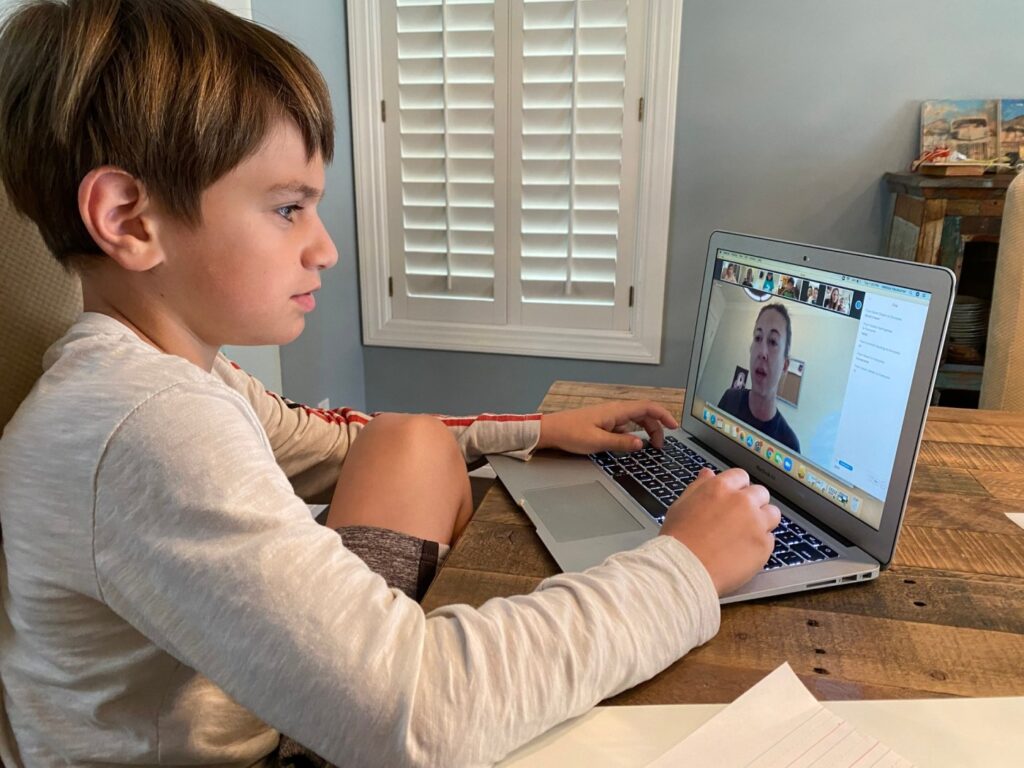
The official results of more than a year of full- and part-time Zoom learning are in, and the practice that became almost universal for schoolchildren in 2020 has gotten its final grade: F for flop.
Here are a few of the most salient facts that emerge from state data on student performance in the 2020-21 school year that ended last June:
Less than 25 percent of California students took standardized tests in 2021, one result of the disengagement brought on by scarcity of in-person teaching. Graduation rates dropped by 1 percent, with Latinos almost doubling the overall drop and Black student graduation rates falling four times that much. By the end of the last school year, only 83.6 percent of students who started high school four years earlier were able to get diplomas. And the younger students were, the worse they fared with Zoom.
Some realities of Zoom learning, mostly done via laptop computers passed out by schools, were obvious long before the figures were in.
Students were less involved than when taught in person. They could simply walk away from their computers and not participate in classes, and in millions of cases there would be no one present to steer them back. Kids could eat all they wanted during class and phones would ring, too, distracting them further.
The results of all this were seen in student performances on standardized tests. After five years of steady improvement, test scores declined for the least privileged groups of students, mainly Blacks and Latinos.
These were the conclusions of the Smarter Balanced assessment test scores, even though so many fewer students actually took the tests in 2021. They were canceled in 2020. The small turnout for the tests probably indicates that only the most involved pupils were included – and scores dropped even for them.
English language arts results fell by 4 percent from 2019 to 2021, with just 48 percent meeting or exceeding national standards (another term for passing the test), and by 5 percent in math, with just 33 percent meeting or exceeding standards, compared with 38 percent two years earlier – already a lousy performance.
Pass rates fell by 12 percent in math and 6 percent in English language arts testing. The drops were much sharper for Latinos (22 percent in math, 10 percent in English) and almost as bad for Blacks (down 9 percent in math and 7 percent in English).
In short, Zoom – or distance – learning proved disastrous to the students it was aimed to keep involved through the worst times of the pandemic.
So California’s public schools, already considered a disgrace by many parents and others, grew far worse when students couldn’t attend them in person.
And that was just for kids who can speak English proficiently. For the state’s approximately 1.1 million English learners, matters went from bad to worse. Their performance drops were even greater than the overall results for ethnic minorities overall.
All this appalls adults who work to improve the futures of today’s schoolkids. “(This) has the potential to have life-altering impacts, especially for our youngest (students),” Samantha Tran, managing director for education policy for the Children Now advocacy group, told a reporter.
Related Articles
Here’s what Democrats in Congress should focus on
From pandemic to endemic
I’m a teacher. Here’s how my school tried to indoctrinate children
Newsom is right about the death penalty, it should be abolished
A transparent government is a good government
State officials tried to downplay the disastrous results. The kids taking the tests, they said, might not have been representative of all California students. In a normal year, they pointed out, 95 percent of all students must take these tests, but only about one-fourth that number actually did last year.
But this reality indicates the real scores, had the usual number of students been tested, would have been far worse than what was recorded.
For by their very presence, those participating were selecting themselves as more interested than others. And the more interested kids are in school, the better they usually test.
The bottom line is that despite legitimate worries about contagion, schools must stay open if at all possible, or the future of their students – and all California – will be seriously at risk.
Email Thomas Elias at tdelias@aol.com.
